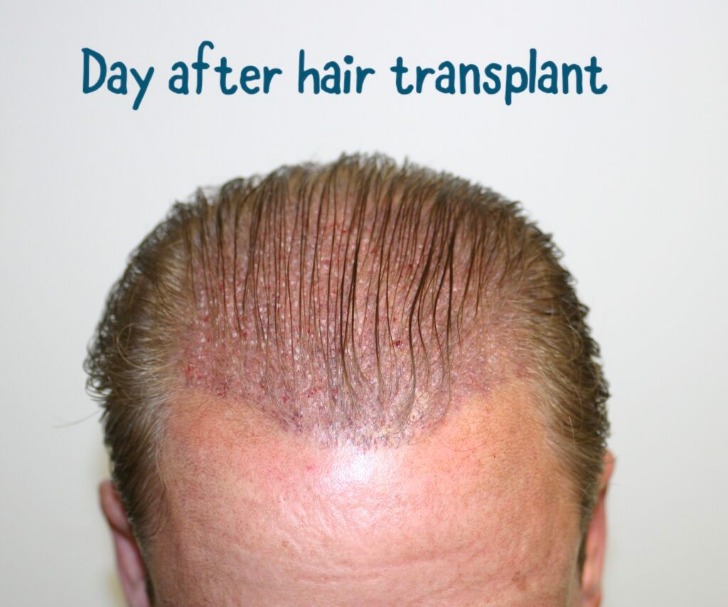
How Hair Transplants Work Leading Edge Hair Transplant Surgery
Though the procedure itself is considered relatively painless, it’s normal to experience some soreness and discomfort at the transplant site for roughly 24 hours after the procedure. Usually, over-the-counter pain relievers such as ibuprofen are more than enough to help manage any pain and ease potential swelling. Your doctor will also prescribe an antibiotic and an anti-inflammatory medication to help ensure a successful and easy recovery. Pre-existing health conditions, such as hormonal imbalances or autoimmune disorders, can influence the success of the transplant and the subsequent growth of transplanted hair. By the sixth month, many patients experience a significant improvement in the overall density and coverage of the transplanted area.
Read more about haartransplantation türkei kosten here. This means that a 3,000-graft hair transplant would contain 5,400 to 6,600 hairs. When it comes to hair transplants, it’s essential to know how long it takes to recover from both the donor area and the scalp.
Then, they can determine how many grafts you might need and develop your personalized transplant plan. Pour the soapy lather on the area starting at the back of the scalp and allow it to rinse the area. Once these steps are done, repeat the process until you have rinsed off all the soapy lather.
More importantly, the Eternal Dermatology team want women to enjoy and protect their hair for years to come. Hair transplants are growing in popularity and have a high success rate. Not only is aftercare essential, but using the right hairstyles can impact the success of your transplant. Talk to us at Root Hair Institute, and we’ll help you address your hair problems. You may have to wait a few weeks after your procedure to return to some of your daily activities. Ensure strict adherence to post-procedure protocols to obtain the best hair transplant results. During this process much of the healing is complete and some of the hair starts to grow.
Will there be any pain during my recovery?
Unlike FUE, where individual follicular units are extracted, in FUT the surgeon grafts an entire strip of the scalp from the donor area. The strip is further split in to as many as 500 to 2,000 minuscule follicular grafts, with each graft comprising either an individual strand of hair or a few hairs. The surgeon then punches tiny incisions into the recipient area, where the follicular grafts are transplanted. Although male hair loss is more well-known, it’s also common for women to lose their hair over time.
Your surgeon may also prescribe you antibiotics or other types of medication to help reduce the likelihood of infection or post-operative swelling. After your procedure, any pain you experience will normally be minimal and easily managed by over-the-counter medications like paracetamol or ibuprofen.
What Is the Fue Hair Transplant Procedure?
The follicles are harvested with a special punch device that scores the area around the hair and uses suction to pull the graft before being placed into the scalp with small incisions. Hair transplants are surgical procedures that aim to encourage hair growth in areas of the body where hair is thinning or absent. These procedures involve a surgeon taking hair follicles from somewhere else on the body with thicker, denser hair and implanting them in a new area. Hair transplants are helpful if supplementation and in-office procedures fail to help hair loss. The procedure involves installing hair follicles into the damaged areas of the scalp from another part of the scalp or body that has excellent hair growth. The hair transplant recovery and growth timeline does not happen in just a couple of days.
The majority of our patients are able to manage any discomfort with a rotation of over-the-counter pain medications. Be sure to discuss the expected amount of pain with your surgeon based on your case and contact them after the procedure if you are experiencing pain beyond the expected discomfort. “It looks like your donor site is pretty well preserved.” But he doesn’t love how the two lines of the hairline (which go up in a wide V, like a widow’s peak) are straight.
After 10 days, do I still have to be concerned?
A hair transplant aims to transfer healthy follicles to spaces where the hair no longer grows due to scarring, damage, hormone issues, or genetics. The procedure requires patience, skill, and precision, taking several hours to complete. The procedure involves transferring follicles using Follicular Unit Extraction (FUE). Receiving a hair transplant can bring a new lease on life, especially after each follicle grows into healthy, new strands on your scalp or hairline. However, you’ll be concerned about how you can style your hair immediately after treatment and long term. There is often fluid that is injected during the procedure that you want to drain back through the back of your neck rather than through the front into your face.
Recovering from a NeoGraft hair transplant is neither painful nor does it take long. Most Hair Doctor patients are physically able to return to work, or play, within 1-2 days of their procedure. Hair transplants are minimally-invasive cosmetic procedures, meaning you can have them while awake, and a bit of local anesthesia is enough to make you feel comfortable throughout. One frustration many patients encounter is hair shedding and loss after the initial growth. Once this first batch of transplanted hair falls out, it should grow back in a permanent capacity.




